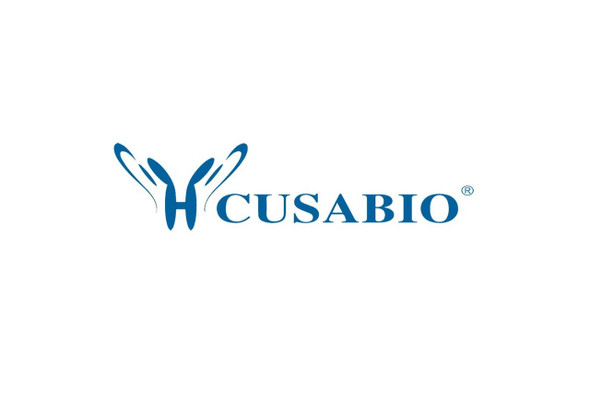Cusabio Active Proteins
Recombinant Human Tumor necrosis factor receptor superfamily member 14 (TNFRSF14), partial (Active) | CSB-MP842173HU
- SKU:
- CSB-MP842173HU
- Availability:
- 3 to 7 Working Days
Description
Recombinant Human Tumor necrosis factor receptor superfamily member 14 (TNFRSF14) ,partial (Active) | CSB-MP842173HU | Cusabio
Protein Description: Partial
Alternative Name (s) : HVEA (HVEM) (UNQ329) (PRO509) (CD270) (TR2) (HveA) (Herpesvirus entry mediator A)
Gene Names: TNFRSF14
Research Areas: Cancer
Species: Homo sapiens (Human)
Source: Mammalian cell
Tag Info: C-terminal hFc-tagged
Expression Region: 39-202aa
Sequence Info: LPSCKEDEYPVGSECCPKCSPGYRVKEACGELTGTVCEPCPPGTYIAHLNGLSKCLQCQMCDPAMGLRASRNCSRTENAVCGCSPGHFCIVQDGDHCAACRAYATSSPGQRVQKGGTESQDTLCQNCPPGTFSPNGTLEECQHQTKCSWLVTKAGAGTSSSHWV
Biological Activity: Measured by its binding ability in a functional ELISA. Immobilized TNFRSF14 at 5 μg/ml can bind human TNFSF14 (CSB-MP023991HUj2) , the EC50 is 49.85-79.31 ng/ml.
MW: 48.5 kDa
Purity: Greater than 90% as determined by SDS-PAGE.
Endotoxin: Less than 1.0 EU/ug as determined by LAL method.
Relevance: Receptor for four distinct ligands: The TNF superfamily members TNFSF14/LIGHT and homotrimeric LTA/lymphotoxin-alpha and the immunoglobulin superfamily members BTLA and CD160, altogether defining a complex stimulatory and inhibitory signaling network (PubMed:9462508, PubMed:10754304, PubMed:18193050, PubMed:23761635) . Signals via the TRAF2-TRAF3 E3 ligase pathway to promote immune cell survival and differentiation (PubMed:19915044, PubMed:9153189, PubMed:9162022) . Participates in bidirectional cell-cell contact signaling between antigen presenting cells and lymphocytes. In response to ligation of TNFSF14/LIGHT, delivers costimulatory signals to T cells, promoting cell proliferation and effector functions (PubMed:10754304) . Interacts with CD160 on NK cells, enhancing IFNG production and anti-tumor immune response (PubMed:23761635) . In the context of bacterial infection, acts as a signaling receptor on epithelial cells for CD160 from intraepithelial lymphocytes, triggering the production of antimicrobial proteins and proinflammatory cytokines (By similarity) . Upon binding to CD160 on activated CD4+ T cells, downregulates CD28 costimulatory signaling, restricting memory and alloantigen-specific immune response (PubMed:18193050) . May interact in cis (on the same cell) or in trans (on other cells) with BTLA (PubMed:19915044) (By similarity) . In cis interactions, appears to play an immune regulatory role inhibiting in trans interactions in naive T cells to maintain a resting state. In trans interactions, can predominate during adaptive immune response to provide survival signals to effector T cells (PubMed:19915044)
PubMed ID:
Notes: Repeated freezing and thawing is not recommended. Store working aliquots at 4℃ for up to one week.
Function:
Involvement in disease:
Subcellular Location:
Protein Families:
Tissue Specificity:
Paythway:
Form: Lyophilized powder
Buffer: Lyophilized from a 0.2 μm filtered PBS, 6% Trehalose, pH 7.4
Reconstitution: We recommend that this vial be briefly centrifuged prior to opening to bring the contents to the bottom. Please reconstitute protein in deionized sterile water to a concentration of 0.1-1.0 mg/mL.We recommend to add 5-50% of glycerol (final concentration) and aliquot for long-term storage at -20℃/-80℃. Our default final concentration of glycerol is 50%. Customers could use it as reference.
Uniprot ID: Q92956
Uniprot Entry Name:
HGNC Database Link: N/A
UniGene Database Link: N/A
KEGG Database Link: N/A
STRING Database Link: N/A
OMIM Database Link: N/A











